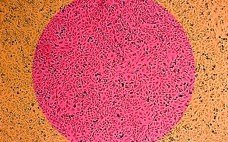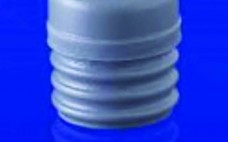Not long ago, chromatography automation meant strip recorders and peristaltic pumps. Today, few people would consider that to be true automation, and even fewer would settle for binders full of strip-recorder paper reels. Automation is becoming intelligent and in the process is making our workflows smarter. But how close is automation to being as smart as an experienced scientist? Bio-Rad Laboratories spoke with academics, biotechnology R&D scientists, and industrial process engineers about the evolution of chromatography automation — where it…
Analytical
Bioreactor Design for Adherent Cell Culture — The Bolt-On Bioreactor Project, Part 1: Volumetric Productivity
The Bolt-on Bioreactor (BoB) project is an independent initiative aimed at developing and commercializing a bioreactor for efficient, automated culture of adherent cells in production of therapeutic cells and other biopharmaceuticals (1). After conducting thorough research on available culture systems for adherent cells, the BoB team believes that a successful alternative to existing devices must solve four major challenges. The first challenge has to do with volumetric productivity, the second with process automation, the third with containment and sterility, and…
Evaluating Freeze–Thaw Processes in Biopharmaceutical Development – Small-Scale Study Designs
Regulations mandate that biopharmaceutical product quality be controlled throughout manufacturing, storage, transportation, and delivery to patients (1). Operations often include freezing and thawing of a bulk drug substance, dilution of that purified substance to a target concentration, filtration, filling into a selected container–closure system, additional processing (e.g., lyophilization), inspection, packaging, storage, transport, and delivery (2). Freezing is a common processing step used to maintain stability and quality of a drug substance during development and production of biopharmaceutical products. It is…
Modern Laboratory Design: Creating a Space for Effective Collaboration
When asked to envision a modern biotechnology laboratory, lay persons might describe what they’ve seen on an episode of CSI: Miami. Gleaming glass and striking colored lights might look good on television, but they are not what biological researchers need to do their work most effectively. Most of the real biological laboratories I’ve visited, in fact, have been stark, white, fluorescent-lit environments that more resemble something out of 2001: A Space Odyssey. But those are becoming passĂ©. The newest concepts…
Accelerated Product Development: Leveraging Industry and Regulator Knowledge to Bring Products to Patients Quickly
A Chemistry, Manufacturing and Controls (CMC) Strategy Forum titled “Accelerated Product Development: Leveraging Combined Industry and Regulator Knowledge to Bring Products to Patients More Quickly” was held in Washington, DC, on 27 January 2014. Biological therapeutics in development are demonstrating remarkable results in the clinic for many indications. So companies are seeking ways to accelerate the approval of these therapies and rapidly bring them to market. Many such products take the form of well-characterized proteins (e.g., IgG1 or IgG2 monoclonal…
Ask the Expert: Accelerating Bioprocess Development Using Shake-Flask Metabolic Activity Data
with Dr. Gernot John of PreSens Precision Sensing GmbH Shake flasks are simple, low-cost devices widely used in screening and media optimization. The most widely measured parameter to determine biomass is optical density (OD). It is typically measured offline because no suitable equipment for broad range biomass measurements in shake flasks has been available. But a new, compact, SFR vario device from PreSens Precision Sensing can be placed under shake flasks to measure four parameters online: pH, O2 saturation, oxygen…
Ask the Expert – Optimizing Cell Culture Media Supplements: Using Design of Experiments for CHO and HEK293 Cells
with Francesc Gòdia (chemical engineering professor at the Universitat Autònoma de Barcelona) Chemically defined media free of animal-derived components are required for bioprocess operations based on mammalian cells. Supplementation of commercial media with specific compounds was studied using a design of experiments (DoE) approach to screen the most efficient compounds for two cell lines and then determine their optimal conditions. DoE allowed simultaneous testing of several compounds to determine potential interactions among them in addition to their individual effects. Gòdia’s…
Unwanted Immunogenicity: From Risk Assessment to Risk Management
Although vaccines and immunotherapies are designed to engage the human immune system in fighting disease, unwanted immunogenicity can be a major problem for protein-based therapeutics. Some patients produce antidrug antibodies (ADAs), which might lead to drug inactivation or adverse effects. Even human and humanized proteins have proven to be surprisingly immunogenic in some cases, suggesting that immune tolerance requires careful consideration in biologic product design. In rushing to deliver new drugs to market, some biotherapeutics developers have overlooked factors that…
Immunoglobulin Fc-Fusion Proteins Part 2: Therapeutic Uses and Clinical Development
The potential therapeutic value of many proteins — including enzymes, receptors, cytokines, blood factors and peptides — can be realized by fusing them to the Fc region of human immunoglobulin G. Of the 46 monoclonal antibody (MAb) and MAb-derivative products approved by the FDA to date as human therapeutics, 10 are Fc-fusion proteins (Table 2). Among approved products, several structural variations are represented (Figure 4). In BPI’s October 2014 issue, Part 1 of this review examined the structure and manufacturing…
Sterilization Effects on Elastomer Characteristics and Functionality in Parenteral Delivery Systems
To drive efficiencies in producing parenteral drug products, manufacturers are using containers and closure components that are received sterile and ready to be introduced into filling lines. The effects of sterilization on the properties of ready-to-use (RU) components must be assessed to ensure proper processing techniques and suitability over the components’ intended shelf lives. Sterile-drug manufacturers must determine the best sterilization method for components based on their respective drug products and processes. Critical areas of risk include potential changes related…










